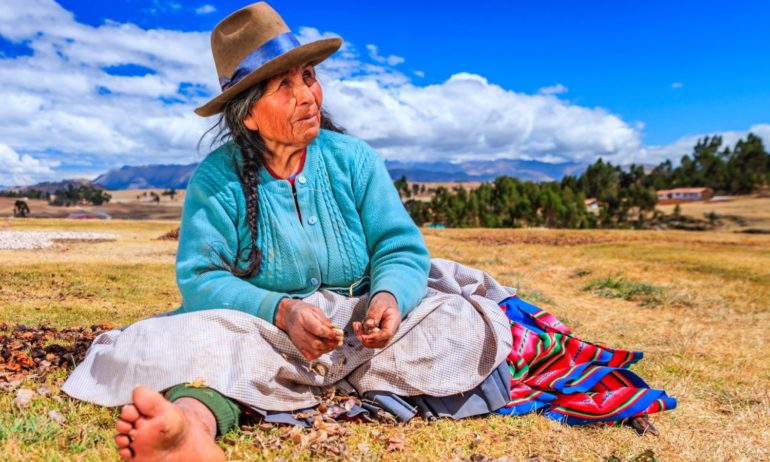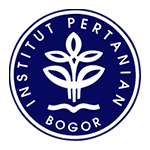
On the 2017 International Day of the World’s Indigenous Peoples, the United Nations is celebrating the 10th anniversary of the Declaration on the Rights of Indigenous Peoples (UNDRIP). The Declaration, formally adopted in 2007, is an international human rights instrument that sets a standard for the protection of indigenous rights. UNDRIP addresses the most significant issues affecting indigenous peoples regarding their civil, political, social, economic, and cultural rights. It recognizes a range of fundamental freedoms of indigenous peoples including their right to self-determination, spirituality, language, lands, territories, resources, and free, prior, and informed consent.
Over the centuries, indigenous peoples have provided a series of ecological and cultural services to humankind. The preservation of traditional forms of farming knowledge and practices help maintain biodiversity, enhance food security, and protect the world’s natural resources. There are approximately 370 million indigenous peoples in the world occupying or using up to 22 percent of the global land area, which is home to 80 percent of the world’s biological diversity. The Declaration affirms that indigenous peoples have the right to own and develop their land and resources and to follow their own traditional ways of growing food.
To celebrate the 10th Anniversary of UNDRIP, Food Tank is highlighting five indigenous farming practices that have helped shape sustainable farming systems and practices all over the world.
1. Agroforestry
Agroforestry involves the deliberate maintenance and planting of trees to develop a microclimate that protects crops against extremes. Blending agricultural with forestry techniques, this farming system helps to control temperature, sunlight exposure, and susceptibility to wind, hail, and rain. This system provides a diversified range of products such as food, fodder, firewood, timber, and medicine while improving soil quality, reducing erosion, and storing carbon.
NGOs Green Hope Fund and Forestever initiated the Sustainable Indigenous Orchards Project in 2010 to fight deforestation and help improve the living and health conditions of Amazonian indigenous communities. Working with indigenous leaders across seven communities, the project works to diversify agricultural production, secure food security, and maintain and protect local biodiversity through agroforestry methods.
The Tropical Agricultural Research and Higher Education Center (CATIE) is dedicated to research and graduate education in sustainable agriculture and natural resource conservation throughout Latin America and the Caribbean. CATIE”s agroforestry research projects work to translate scientific findings into practices that small producers can apply on their farms to improve the production of ecosystem services and diversify crop production.
The Ghana Permaculture Institute has established several community tree nurseries to produce large numbers of trees that support reforestation and agroforestry farming projects. Working to support community-based sustainability, the institute provides education to small farmers on agroforestry techniques and planting combinations of fast-growing beneficial tree species.
2. Crop Rotations
The principles of crop rotation have been successfully used for thousands of years in agriculture and are still used today. Crop rotation is the practice of growing different crops on the same land so that no bed or plot sees the same crop in successive seasons. It is a practice designed to preserve the productive capacity of the soil, minimize pests and diseases, reduce chemical use, and manage nutrient requirements, all of which help to maximize yield. The practice of crop rotation builds better soil structure and increases the ability to store carbon on farms.
The Center for Integral Small Farmer Development in the Mixteca (CEDICAM) works primarily in the Mixteca region of Mexico, a region categorized by its high level of environmental degradation and desertification. CEDICAM’s work supports the subsistence farmer population to integrate sustainable agricultural techniques and enhance local food security. CEDICAM’s sustainable agriculture project utilizes crop rotations with polycultures to successfully increase crop yields, soil fertility, and reduce pest problems.
The Soils, Food and Healthy Communities (SFHC) organization is a participatory, farmer-led organization which uses local indigenous knowledge and agroecological methods to improve food security and nutrition in Malawi. Their Malawi Farmer-to-Farmer Agroecology project (MAFFA) uses farmer-to-farmer teaching about agroecological farming methods—such as crop rotations—to improve food security, nutrition, and soils of 6,000 farming households in central and northern Malawi.
Founded by world-renowned scientist and environmentalist Dr. Vandana Shiva,Navdanya is an NGO based in India that is actively involved in the rejuvenation of indigenous knowledge and culture through organic farming. Navdanya’s biodiversity-based organic farming methods help small farmers build living soils through providing locally adaptable cropping practices, including mixed cropping and crop rotations.
3. Mixed-/Inter-cropping
Mixed cropping, also known as intercropping, is a system of cropping in which farmers sow more than two crops at the same time. By planting multiple crops, farmers can maximize land use while reducing the risks associated with single crop failure. Intercropping creates biodiversity, which attracts a variety of beneficial and predatory insects to minimize pests and can also increase soil organic matter, fumigate the soil, and suppress weed growth.
Located in India, NGO Agragamee established the Wadi-Tribal Development Project to strengthen agrarian livelihoods and increase food and nutritional security. “Wadi” in Gujarati means a small orchard covering one acre. Two or more agricultural crops are strategically selected for intercropping with fruit trees in the Wadi model to minimize climatic and biological risks and provide a diverse range of nutritional food to local communities.
Timor-Leste NGO Resilient Agriculture and Economy through Biodiversity in Action (REBIA) works with men, women, and youth to promote a biodiversity-based agriculture model that increases food production, reduces environmental degradation, and improves economic opportunities. In conjunction with USC Canada, REBIA is working to increase the diversity of crops at the household and community level by providing a variety of vegetable crop seeds for home gardens.
The Traditional Native American Farmers Association (TNAFA) holds an annual Indigenous Sustainable Food Systems Design Course (ISFSDC), providing training in ecological design, natural farming, and earth restoration. ISFSDC is a holistic indigenous approach based on traditional knowledge and practices that utilizes permaculture principles such as mixed cropping.
4. Polyculture
Polyculture systems involve growing many plants of different species in the same area, often in a way that imitates nature. By increasing plant biodiversity, polyculture systems promote diet diversity in local communities, are more adaptable to climate variability and extreme weather events, and are more resilient to pests and diseases. Polycultures are integral to permaculture systems and design and provide many advantages such as better soil quality, less soil erosion, and more stable yields when compared to monoculture systems.
The Permaculture Research Institute Kenya works with local partners and farmer associations through their Community Permaculture and Regenerative Enterprise Program, combining permaculture and entrepreneurship training. The program utilizes a polyculture approach with multiple food and medicinal plant species that repel pests, prevent soil erosion, improve water conservation, and provide essential ecosystem services.
Esplar Research and Advisory Center is a Brazilian nonprofit organization developing agroecological systems on family farms throughout the semi-arid state of Ceará. These agroecological systems are based on a polyculture system of cotton, bean, sesame, corn, and other crops to generate income, increase food security, and conserve natural resources on participating family farms.
The Mesoamerican Permaculture Institute (Instituto Mesoamericano de Permacultura, IMAP) is a Mayan-run, Mayan owned nonprofit organization in Guatemala empowering indigenous farmers to combat poverty and malnutrition through permaculture education. IMAP’s projects promote native seeds and the conservation of local polyculture systems, preserving their genetic value and cultural importance.
5. Water Harvesting
Water harvesting is defined as the redirection and productive use of rainfall, involving a variety of methods to collect as much water as possible out of each rainfall. Many water harvesting structures and systems are specific to the ecoregions and culture in which it has been developed. This may involve collecting water from rooftops, from swollen streams and rivers during monsoon season, or from artificially constructed catchments. This ensures that farmers have a substantial amount of water stored up in the case of drought or limited rainfall.
EkoRural is a local NGO in Ecuador and a member of the global partnership organization Groundswell International. EkoRural works in fragile and degraded mountain ecosystems where climate change is altering rainfall patterns and groundwater availability. Through conducting action-based research, EkoRural works with rural households to develop new methods of water harvesting to increase on-farm sustainable production and food security.
The Muonde Trust is comprised of a large team of researchers and community extension agents who support locally-driven educational, agricultural, and community extension programs in Zimbabwe. One of their main projects includes farmer-to-farmer networking and training to spread proven water harvesting, catchment management, micro-irrigation, and permaculture techniques in this drought-affected region.
The Doba-based Livelihood Program is an initiative of the Rajadighi Community Health Service Society (RCHSS) located in West Bengal, India, that is helping small-holder farmers conserve water and mitigate against climate change. Dobas are small human-made pits or ditches that, while traditionally used for other purposes, can harvest direct rainfall during the wet season and provide much-needed irrigation to crops during dryer months.
Indigenous peoples play a key role in sustainable smallholder farming around the world, thanks to their traditional knowledge and understanding of ecological systems and local biodiversity. The preservation and continued evolving use of this knowledge is embedded in recognizing indigenous peoples’ fundamental right to follow their own traditional ways of growing food.









